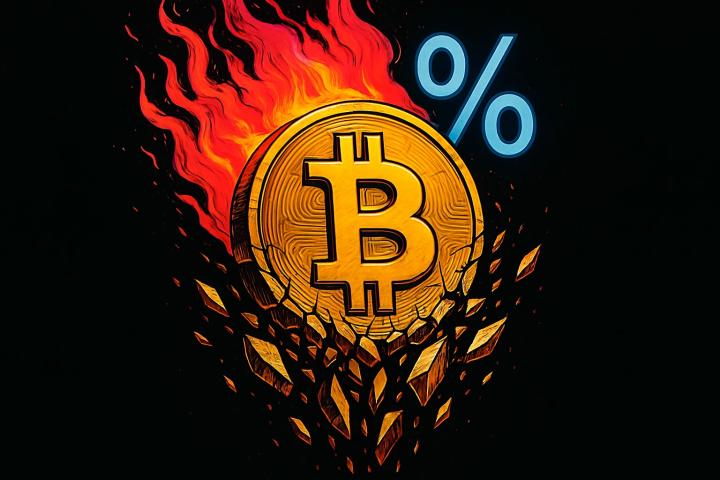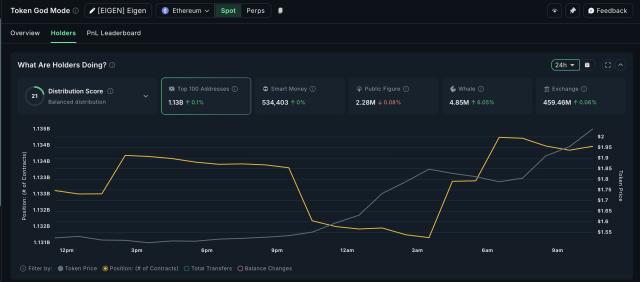This week , Binance's USDC current account subsidy program expired. This low-risk investment scenario, with instant deposits and withdrawals and immediate returns, is ideal for DeFi beginners and particularly suitable for those working outside the industry. Its nearly 12% yield is impressive across the entire Web3 ecosystem. I'm sure many will be eager to find alternative, low-risk stablecoins.
Seven principles for "office workers outside the circle" to participate in stablecoin financial management
First, I want to describe a scenario. If you think this scenario is attractive enough, then the content of this article will be useful to you:
By configuring assets through simple on-chain operations, you can obtain an annualized rate of return of 10% based on the US dollar standard. Funds can be deposited and withdrawn at any time without the need for lock-up. The risk of principal loss is extremely low, and you don’t need to check your dashboard frequently.
Such scenarios are relatively rare in traditional finance. To achieve a yield exceeding the 3.7% yield on short-term US Treasury bonds, one must master complex hedging and arbitrage techniques, focus on the fundamentals of certain junk bonds, and bear the risk of P2P defaults. However, in the DeFi world, due to varying levels of market maturity and evolving regulatory environments for stablecoins, there are numerous stablecoin issuers and lending protocols. In this competitive market, each company offers additional subsidies to stimulate product adoption, much like the generous vouchers offered by various companies in the "takeout wars." Therefore, at this stage in the market, it is still possible to find stablecoin investment scenarios with relatively substantial returns and manageable risks.
This stablecoin investment scenario is suitable for non-cryptocurrency investors seeking stable returns, particularly those working outside the cryptocurrency community. This is because you don't need to bet on cryptocurrency trends; you simply benefit from the on-chain capital premium paid by speculators and Degen investors seeking alpha returns. Furthermore, the asset allocation process requires minimal learning and time investment. Therefore, if you still want to maintain your USD stablecoin holdings during this interest rate cut cycle, you might want to pay close attention to this stablecoin investment scenario.
First, I would like to sort out some important principles for these users when choosing a stablecoin financial management scenario:
1. Keep operations simple and avoid complex on-chain interactions: For DeFi beginners, it's important to remember that more complex on-chain interactions mean greater risk exposure and higher costs. This is because you could potentially access a phishing platform and authorize your funds to a malicious address during a single interaction. Or, when transferring funds across chains, you could mistakenly enter the wrong receiving address. Therefore, DeFi beginners should prioritize simple financial management scenarios to avoid unnecessary losses.
2. Choose only established platforms and products, and control your greed: New protocols typically offer users more rewards. However, when tempted by ultra-high yields, be mindful of your greed. Many DeFi products are developed by anonymous teams. In the event of a catastrophic incident, such as a theft of funds, you'll only receive a letter of explanation and a large amount of worthless tokens as compensation in a recovery plan. Furthermore, new protocols face the test of hackers lurking in the dark forest of on-chain transactions, and whether they can withstand this is uncertain. Therefore, for DeFi newbies, I recommend initially choosing established platforms and protocols, and remaining cautious about stablecoin investment scenarios exceeding 10%.
3. Pay attention to the revenue model and avoid the "tokenomics" trap: We should also pay attention to the APR values listed on the official website and carefully study the revenue composition and the conditions for cashing out. To reduce the pressure of subsidies on the coin price, many projects will try to alleviate this through tokenomics designs. For example, your rewards may not be directly sold on the secondary market to compound interest, and you will have to go through a long unlocking period before you can receive your rewards. This introduces great uncertainty, as you cannot know the price trend of the reward tokens during this unlocking period, which will greatly affect your final actual rate of return. Therefore, when choosing a financial management scenario, try to choose one that is easier to obtain returns.
4. Not all "stablecoins" are stable: Stablecoins have been a key innovation since the DeFi summer. Remember the heyday of algorithmic stablecoins driven by Luna? That vibrant, all-encompassing scene is still fresh in our minds. However, today, only stablecoins with 100% reserves can guarantee stability. However, the management of these reserves varies significantly. For example, Ethena's USDe maintains its reserves through a Delta Neutral perpetual contract funding rate arbitrage strategy, while the management mechanism behind the recently popular Falcon USDf is even more complex. We won't delve into these details in this article. For beginners, I recommend that if you don't want to worry about your principal de-pegging during business hours, choose payment-focused stablecoins backed by large institutions and with reserves comprised of highly liquid assets, such as USDT and USDC, or decentralized stablecoins overcollateralized with blue-chip assets, such as USDS, GHO, and crvUSD.
5. Understand the yield mechanism and choose products wisely: Another important point to understand is that the yield you see at a certain time may not always be maintained. Therefore, you need to be able to judge how long an attractive yield can be maintained. A typical example is that you may find that the USDC supply rate in a lending protocol is over 15%. However, this usually means that the utilization rate of the fund pool is over 95%, and the borrower will bear a borrowing interest rate of over 20%, which is generally unsustainable. Don't be too optimistic, as automated interest rate arbitrage protocols will continuously scan for such interest rate anomalies and quickly offset them. After familiarizing yourself with the basic usage logic of DeFi protocols, you can explore fixed-rate products such as Pendle.
6. Try to interact when the network is idle to avoid expensive operations: Another detail that's often overlooked is that when interacting with DeFi, it's important to choose a time when the network is idle. To do so, open Etherscan and check the current gas level. Currently, below 0.2 GWEI is the average level when the network is relatively idle. Therefore, when opening Metamask, be sure to check the fee cost. Otherwise, your accumulated $100 reward might cost you $120 in gas.
7. Exchange rate risk cannot be ignored in the new cycle: Finally, if you are a non-USD-based investor, please pay attention to exchange rate risk, because the current macroeconomic changes all point to a depreciation trend of the US dollar. In the past month, the RMB has appreciated by about 1%. Therefore, when making investment decisions, you must also consider the exchange rate factor.
Recommend some 10% stablecoin yield scenarios suitable for DeFi newbies
After introducing these principles, I would like to recommend two stablecoin investment scenarios that are more suitable for DeFi novices as alternatives to Binance USDC current account investment.
The first is the RLUSD offered in Ethereum AAVE V3, offering a relatively consistent 11% APR. RLUSD is a fiat-backed stablecoin launched by Ripple Labs and pegged 1:1 to the US dollar. The majority of its reserves are held in highly liquid assets such as US dollars and short-term Treasury bonds. It operates strictly within the New York State trust company regulatory framework, ensuring stability and security. RLUSD has already exceeded 700M in circulation and boasts over 50M liquidity on Curve, meaning users face low slippage costs when opening positions.

On Ethereum's AAVE V3, providing RLUSD earns an 11.56% APR. Of this, 1.08% comes from interest paid by RLUSD borrowers on AAVE, which is automatically rolled back to the user's principal. The remaining 10.47% comes from Ripple's official subsidy to fund providers, distributed biweekly through the Merit Program. Users can claim these subsidies on the Aave Chan Initiative Dashboard. Based on my observations, these subsidies have been in place for several months, indicating that this yield has been maintained for a considerable period of time. Participating in this scenario is also relatively simple: simply exchange RLUSD on Curve and supply it to AAVE.


The second is the GHO stablecoin offered in Avalanche AAVE V3, which offers a consistent 11.8% APR. GHO is AAVE's official, over-collateralized decentralized stablecoin. Its specific mechanics have been detailed in previous articles and will not be elaborated on here. GHO's collateral consists of AAVE-designated blue-chip crypto assets and relies on AAVE's liquidation mechanism to ensure GHO's price stability.

Avalanche, on the other hand, is a high-performance L1. Although it is gradually lagging behind in ecosystem development, it has strong regulatory compliance resources. Similar to RLUSD, the 11.8% APR offered by Avalanche AAVE V3 for GHO stablecoins is also composed of two parts: a 1.33% borrowing rate and a 10.47% return from the AVAX official subsidy. This portion is also distributed through the Merit Program and is distributed uniformly every two weeks. Users can actively claim it on the Aave Chan Initiative Dashboard. The subsidy also lasts for a considerable period of time. It should be noted that this part of the reward is issued in the form of asAVAX, which is the deposit certificate of sAVAX in AAVE, and sAVAX is the deposit certificate for staking AVAX to participate in POS mining in BENQI, the top Liquid Staking protocol in the AVAX ecosystem. If you want to exchange this part of the reward for other tokens, you need to unstake it through BENQI, and the cooling-off period is 15 days. Of course, this part of the token is also an interest-bearing asset and can obtain a 5% staking income.


The author believes that these two stablecoin income scenarios are more suitable for DeFi novices and office workers outside the circle, and everyone can participate with caution.






